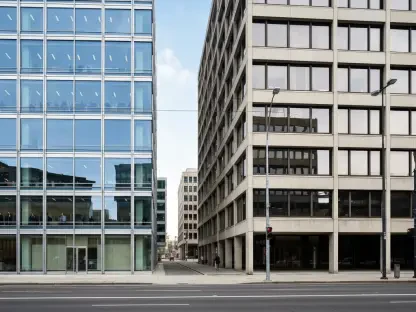When preparing a home for sale, many sellers focus on curb appeal or staging living spaces, but a critical area often overlooked can make or break a deal, and that’s the bathroom. Bathrooms, though sometimes an afterthought, hold immense power in shaping buyer perceptions and ultimately influencing offers. Renowned interior designer Kellie Richardson of Kurved by Design, with years of experience crafting spaces for high-profile clients, has sounded the alarm on how seemingly minor bathroom flaws can derail a home sale. From unhygienic conditions to outdated designs, these mistakes can signal neglect to potential buyers, casting doubt on the property’s overall condition. Richardson’s insights reveal that a bathroom’s presentation isn’t just about aesthetics—it’s about evoking the right emotional response. As buyers scrutinize every detail during viewings, ensuring this space is pristine becomes a non-negotiable step for sellers aiming to secure top dollar in a competitive market.
The Hidden Impact of Bathroom Presentation
The significance of a bathroom in a home sale cannot be overstated, as it often serves as a litmus test for the property’s overall maintenance. Buyers tend to approach this space with a critical eye, moving beyond mere visualization to assess its condition for signs of deeper issues. A bathroom that appears dirty or poorly kept can instantly create a negative impression, leading potential buyers to question whether the rest of the home has been similarly neglected. Issues like visible mold, lingering odors, or cluttered countertops don’t just detract from appeal—they raise red flags about structural problems or costly repairs. Kellie Richardson emphasizes that buyers are quick to associate a subpar bathroom with hidden flaws, such as plumbing or ventilation issues, which can drastically lower their willingness to make a competitive offer. In a market where first impressions are everything, a bathroom’s state can quietly influence perceptions far beyond its four walls, affecting the entire sale process.
Beyond the practical concerns, the emotional weight a bathroom carries in a buyer’s decision-making process is profound. A clean, well-presented space can evoke a sense of comfort and possibility, allowing buyers to imagine themselves using it daily without hesitation. Conversely, an unhygienic or outdated bathroom can trigger feelings of discomfort or even disgust, pushing buyers to focus on the work needed rather than the home’s potential. Richardson points out that bathrooms, much like kitchens, are high-impact areas due to their frequent use and the significant expense tied to renovations. When buyers encounter problems like dampness or outdated features, they often calculate the financial burden of fixes, which can lead to reduced offers or a complete loss of interest. This emotional reaction, paired with practical considerations, underscores why sellers must prioritize this space as a key element of their home’s marketability, ensuring it aligns with buyer expectations.
Common Bathroom Flaws That Deter Buyers
Among the most frequent missteps sellers make are issues related to cleanliness and hygiene, which can instantly turn off potential buyers. Visible dirt, such as stains in the toilet or bathtub, hair in sinks, or grimy tiles, creates an immediate negative response that’s hard to overcome. Even subtle problems like unpleasant odors or cluttered vanities piled with personal items can disrupt the neutral, inviting atmosphere buyers seek. Kellie Richardson warns that these flaws signal a lack of care, prompting buyers to wonder about unseen maintenance lapses elsewhere in the home. Such impressions can devalue a property by thousands of dollars, as buyers factor in the cost and effort of addressing these issues themselves. Sellers must recognize that a bathroom’s cleanliness isn’t just a minor detail—it’s a fundamental aspect that shapes how the entire home is perceived during a showing.
Another critical area of concern lies in outdated or problematic design choices that raise red flags for buyers. Features like carpeted bathroom floors, once a trend but now widely seen as unhygienic, can evoke strong negative reactions due to concerns about moisture and mold. Similarly, visible signs of water damage or poor ventilation suggest long-term neglect, hinting at expensive structural repairs. Richardson highlights that while buyers might overlook dated aesthetics if the space feels clean, they are far less forgiving of elements that imply health or safety risks. These design flaws can shift a buyer’s mindset from envisioning a quick cosmetic update to dreading a major overhaul, significantly impacting their willingness to proceed with an offer. Addressing these issues before listing a home becomes crucial to maintaining its perceived value and appeal in a discerning market.
Practical Solutions for Sellers to Boost Appeal
For sellers looking to enhance their bathroom’s presentation without breaking the bank, simple cosmetic improvements can yield significant results. Decluttering countertops by removing personal items like toothbrushes or toiletries creates a sense of space and neutrality, allowing buyers to project their own vision onto the area. Adding small, thoughtful touches—such as a fresh plant, a pleasant-smelling candle, or a stylish soap dispenser—can elevate the ambiance and make the room feel inviting. Kellie Richardson advises focusing on hygiene above all, ensuring surfaces are spotless and odors are eliminated with proper cleaning or air fresheners. These low-cost efforts can transform a bathroom from a potential deal-breaker into a subtle asset, helping buyers focus on the home’s strengths rather than its flaws, all while avoiding the need for expensive renovations in a time of rising living costs.
Beyond basic tidiness, sellers should pay attention to minor repairs and updates that signal care and attention to detail. Fixing leaky faucets, replacing cracked tiles, or repainting walls in a neutral color can go a long way in refreshing the space without requiring a full remodel. Richardson stresses that buyers are increasingly hesitant to take on big projects, so presenting a bathroom that feels move-in ready is a strategic advantage. Ensuring proper ventilation to prevent mold and addressing any visible wear can also reassure buyers that no major issues lurk beneath the surface. These actionable steps not only improve the bathroom’s appeal but also contribute to a broader narrative of a well-maintained home, potentially speeding up the sale process and securing better offers. Sellers who invest time in these details often find that the return in buyer confidence far outweighs the minimal effort required.
Reflecting on Key Takeaways for Future Sales
Looking back, the insights shared by Kellie Richardson paint a clear picture of how bathroom presentation plays a pivotal role in home sales. Many transactions have been influenced by the state of this often-overlooked space, with sellers who prioritized cleanliness and minor updates often seeing quicker closings and stronger offers. The lessons learned underscore that neglecting small flaws can lead to significant buyer hesitation, sometimes costing thousands in perceived value. Reflecting on these experiences, it becomes evident that a bathroom’s condition is not just a detail but a defining factor in shaping emotional and financial outcomes. For future sales, homeowners are encouraged to treat this area with the same care as more visible spaces, recognizing its disproportionate impact. Moving forward, adopting Richardson’s straightforward strategies—focusing on hygiene, decluttering, and subtle enhancements—offers a practical path to align with buyer expectations and maximize a property’s market potential.









